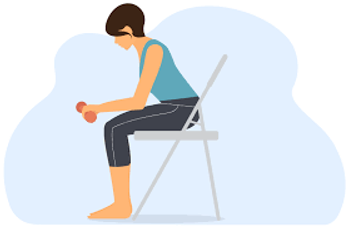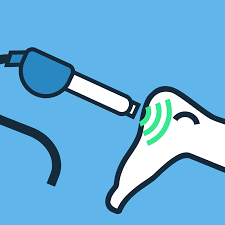How to Set-Up an Ergonomic Desk?
Setting up an ergonomic desk is crucial for promoting comfort, productivity, and preventin

musculoskeletal issues. Here are guidelines to help you set up an ergonomic desk:
1. Chair Selection:
Choose an adjustable chair with good lumbar support. The chair should allow your feet to rest flat on the floor, with your knees forming a 90-degree angle.
2. Desk Height:
Ensure that your desk is at the correct height. Your elbows should be close to your body, forming a 90-degree angle when resting on the desk. If your desk is too high, consider using an adjustable chair or an ergonomic keyboard tray to achieve the right height.
3. Monitor Placement:
Position your monitor at eye level to reduce strain on your neck. The top of the screen should be at or slightly below your eye level. Use a monitor stand or adjust the monitor height accordingly.
4. Distance from Monitor:
Keep the monitor at arm's length away from you. This helps prevent eye strain and allows you to maintain a comfortable viewing distance.
5. Keyboard and Mouse Position:
Place your keyboard and mouse at a height that allows your arms to form a 90-degree angle. Use a keyboard tray or an ergonomic desk to achieve the correct positioning.
6. Wrist Support:
Use a wrist rest or mouse pad with cushioning to support your wrists while typing or using the mouse. Keep your wrists in a neutral position to prevent strain.
7. Desk Space Organization:
Organize your desk space to minimize clutter. Place frequently used items within arm’s reach to avoid excessive reaching or twisting.
8. Desk Accessories:
Consider using ergonomic accessories such as an adjustable desk lamp to reduce glare, an external document holder to avoid neck strain, and cable organizers to manage cords.
9. Footrest (if needed):
If your feet don't comfortably reach the floor, use a footrest to support your feet. This helps maintain proper posture and reduces pressure on your lower back.
10. Monitor Distance and Angle:
Position the monitor directly in front of you to avoid twisting your neck. Tilt the screen slightly upward to reduce glare.
11. Take Breaks:
Incorporate breaks into your work routine. Stand up, stretch, and move around to prevent stiffness and promote circulation.
12. Proper Lighting:
Ensure that your workspace is well-lit to reduce eye strain. Use adjustable lighting and position it to minimize glare on the screen.
13. Invest in Ergonomic Furniture:
If possible, invest in ergonomic furniture designed for comfort and support. This may include ergonomic chairs, sit-stand desks, and other accessories that promote a healthy work environment.
Regularly reassess and adjust your ergonomic setup as needed. Everyone’s body is different, so it’s important to make personalized adjustments based on your own comfort and preferences. If you experience persistent discomfort or pain, consider consulting with an ergonomics expert or healthcare professional for further guidance.














































